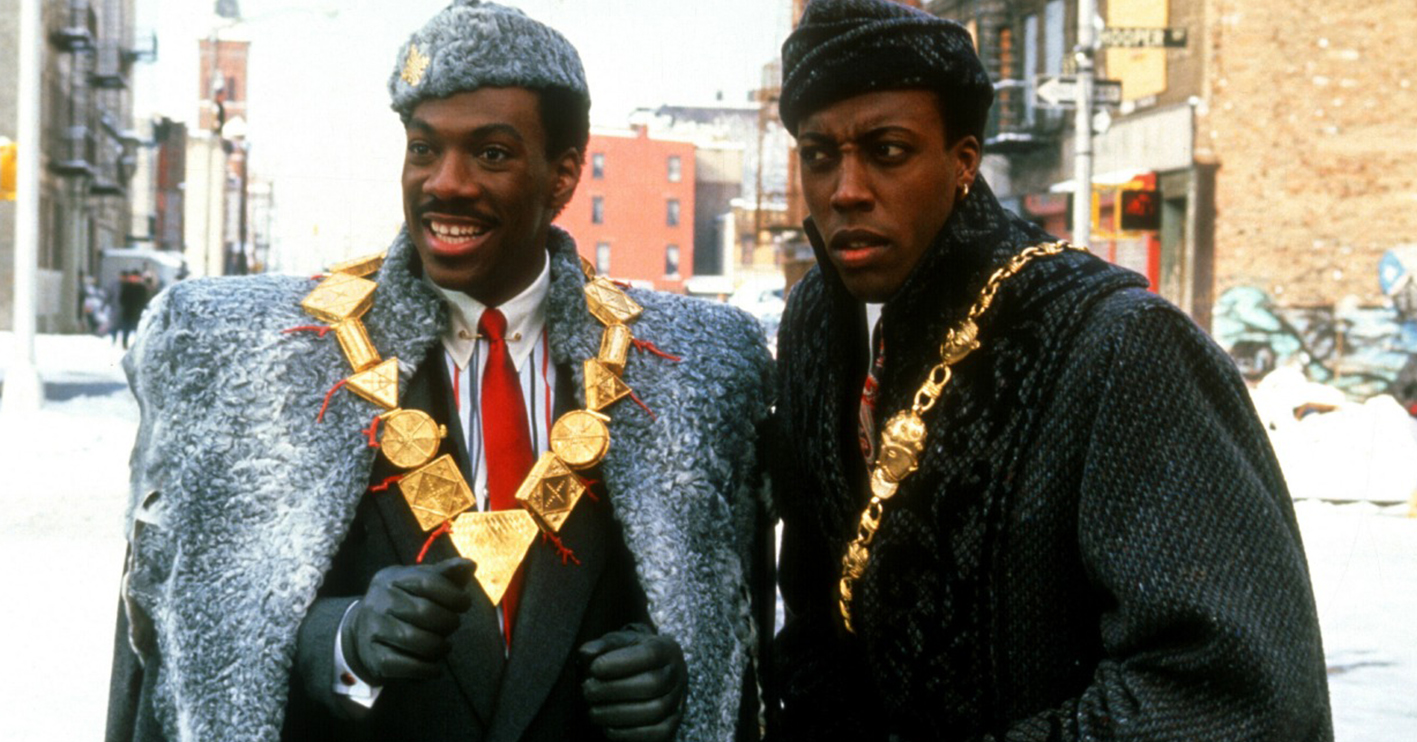One of Eddie Murphy‘s most enduringly popular films is Coming to America, which casts the comedy legend as the sheltered prince of an African country who flees to New York and pretends to be a commoner in the hopes of finding his true love. A big hit on release in 1988, Coming to America remains well-loved to this day – but did you know the following facts about this comedy classic?
20. It was the first movie in which Eddie Murphy played multiple characters
Over the years, film comedy legend Eddie Murphy has been renowned for frequently playing multiple characters in his movies, generally with the use of heavy make-up. Coming to America marked the first time that Murphy did so, with the actor playing no less than three additional roles in the film, on top of the main character Prince Akeem.
With the aid of renowned make-up FX artist Rick Baker, Murphy was transformed into singer Randy Watson, barbershop owner Clarence, and (most surprisingly) white Jewish barbershop customer Saul. Murphy’s co-star Arsenio Hall followed suit, also playing another three roles on top of his main character of Semmi: Hall also appears as Reverend Brown, Morris the Barber and Extremely Ugly Girl (that’s how the role is named in the credits).
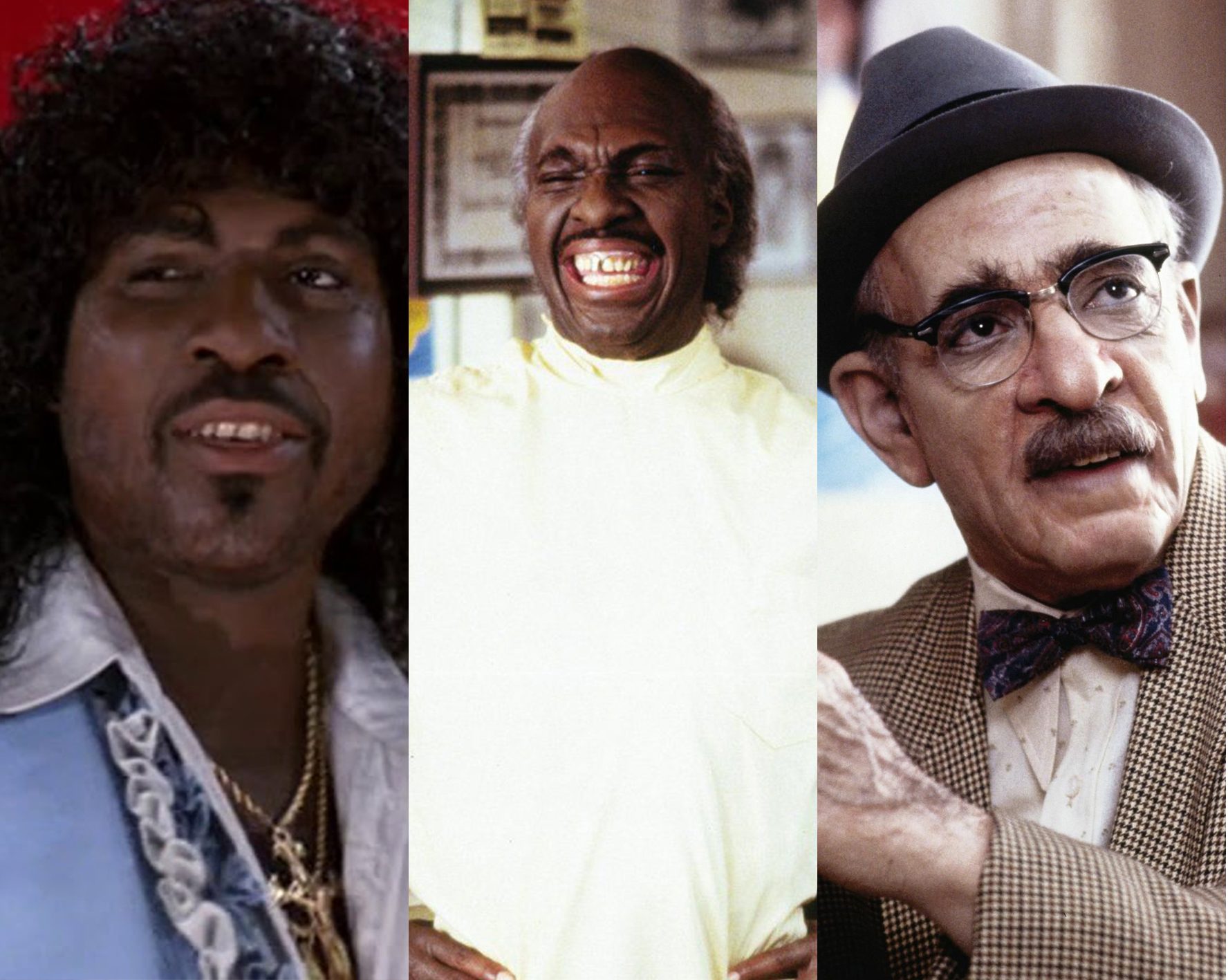
19. There’s a cameo from the Dukes of Trading Places
Coming to America was the second collaboration between actor Eddie Murphy and director John Landis, who had previously worked together on 1983’s smash hit Trading Places. This earlier film was Murphy’s second big screen appearance after 48 Hrs., and it helped make Murphy a superstar. As such, the filmmakers decided to include a fan-friendly nod to the film in Coming to America.
At one point, Eddie Murphy’s character gives two elderly vagrants a bag full of money. These men, played by actors Don Ameche and Ralph Bellamy, identify themselves as Randolph and Mortimer. These are the Duke Brothers, the duplicitous millionaires Ameche and Bellamy portrayed in Trading Places who were left penniless by the film’s end.

18. McDonald’s gave their blessing for rip-off restaurant McDowell’s
Much of the action in Coming to America is set around a Queens fast food restaurant named McDowell’s, a burger outlet with a strangely familiar name, as well as a familiar golden-arched logo. McDowell’s was of course an entirely fictitious restaurant: in reality, the set was a Wendy’s restaurant that was due to be closed for renovation.
The McDonalds corporation gave full permission for the McDowell’s name and logo to be used. Still, in spite of the fast food giant giving their blessing to the use of the name, when the set was built a manager from a local McDonalds restaurant turned up with his lawyer, threatening to sue. The filmmakers were then forced to explain the situation.
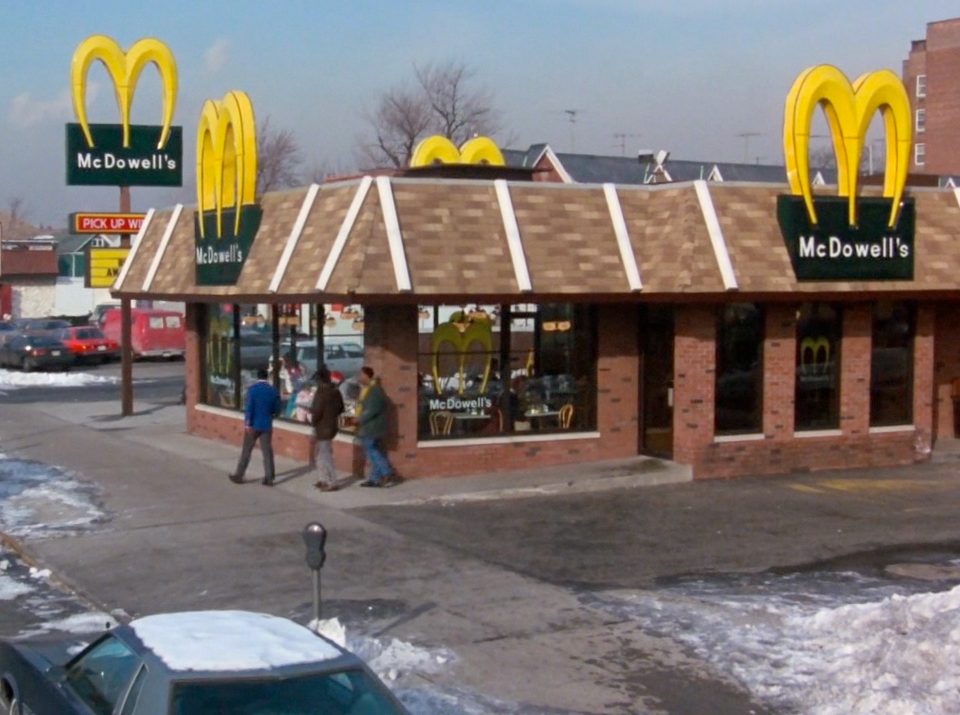
17. Murphy borrowed the name of his fictitious African nation from Richard Pryor
Coming to America’s lead character Akeem Joffer is the prince of a fictitious African country called Zamunda. Eddie Murphy borrowed the name Zamunda from one of his comedy heroes, Richard Pryor, who had talked about a tribe from country of this name in a stand-up comedy routine some years earlier. (In recent sequel Coming 2 America, Zamunda is mistaken for Black Panther’s Wakanda.)
As one of the first black comedians to become a mainstream star, Richard Pryor laid a lot of the groundwork for Eddie Murphy’s later success, and the two comedians would become friends. The year after Coming to America, Pryor appeared Eddie Murphy in the film Harlem Nights, which was also Murphy’s first (and to date last) film as director.

16. The dance sequence is a recreation of Michael Jackson’s Thriller
Near the start of the film there is an elaborate dance sequence from some of the subjects of Zamunda. This scene was choreographed by Paula Abdul, who had enjoyed huge success as a dance choreographer for movies and music videos in the 80s. She also broke out as a musical solo artist in 1988, with her breakthrough hit single Straight Up.
If you think that elements of the dance performed by the women of Zamunda looks a bit familiar, that’s probably because it’s an up-tempo version of the dance from Michael Jackson’s Thriller. This, like the cameo from Don Ameche and Ralph Bellamy, is another reference to an earlier John Landis work, as Landis also directed Thriller’s legendary music video.

15. Tensions grew between Eddie Murphy and John Landis during filming
Coming to America was the second collaboration between Eddie Murphy and director John Landis after Trading Places, but it was not the happiest reunion. Murphy, who had hired Landis for the film, felt the director “was still treating me like a kid.” Meanwhile, Landis has remarked that Murphy’s wealth and fame since Trading Places had made him “the pig of the world… unpleasant, arrogant.”
The two men did not get along well during the shoot, and Murphy swore they wouldn’t work together again. This turned out not to be the case, as Landis would later direct Murphy in Beverly Hills Cop III, but that proved to be the last straw for their working relationship. Landis was not invited back for sequel Coming 2 America, which was instead directed by Craig Brewer.

14. It was the first collaboration of future Lion King voice actors James Earl Jones and Madge Sinclair
As the parents of Murphy’s Akeem, Coming to America stars James Earl Jones as King Jaffe Joffer, and Madge Sinclair as Queen Aoleon Joffer. This casting proved to be a winning combination, as Jones and Sinclair would go on to play another royal couple, Mufasa and Sarabi, in Disney’s 1994 animated blockbuster The Lion King.
The acclaimed, long-standing screen star Jones (best known for voicing Darth Vader in the Star Wars movies) would go to reprise the role of King Jaffe in Coming 2 America, as well as voicing Mufasa a second time in the 2019 remake of The Lion King. Sadly, his co-star Madge Sinclair passed away from leukemia in 1995, aged just 57.
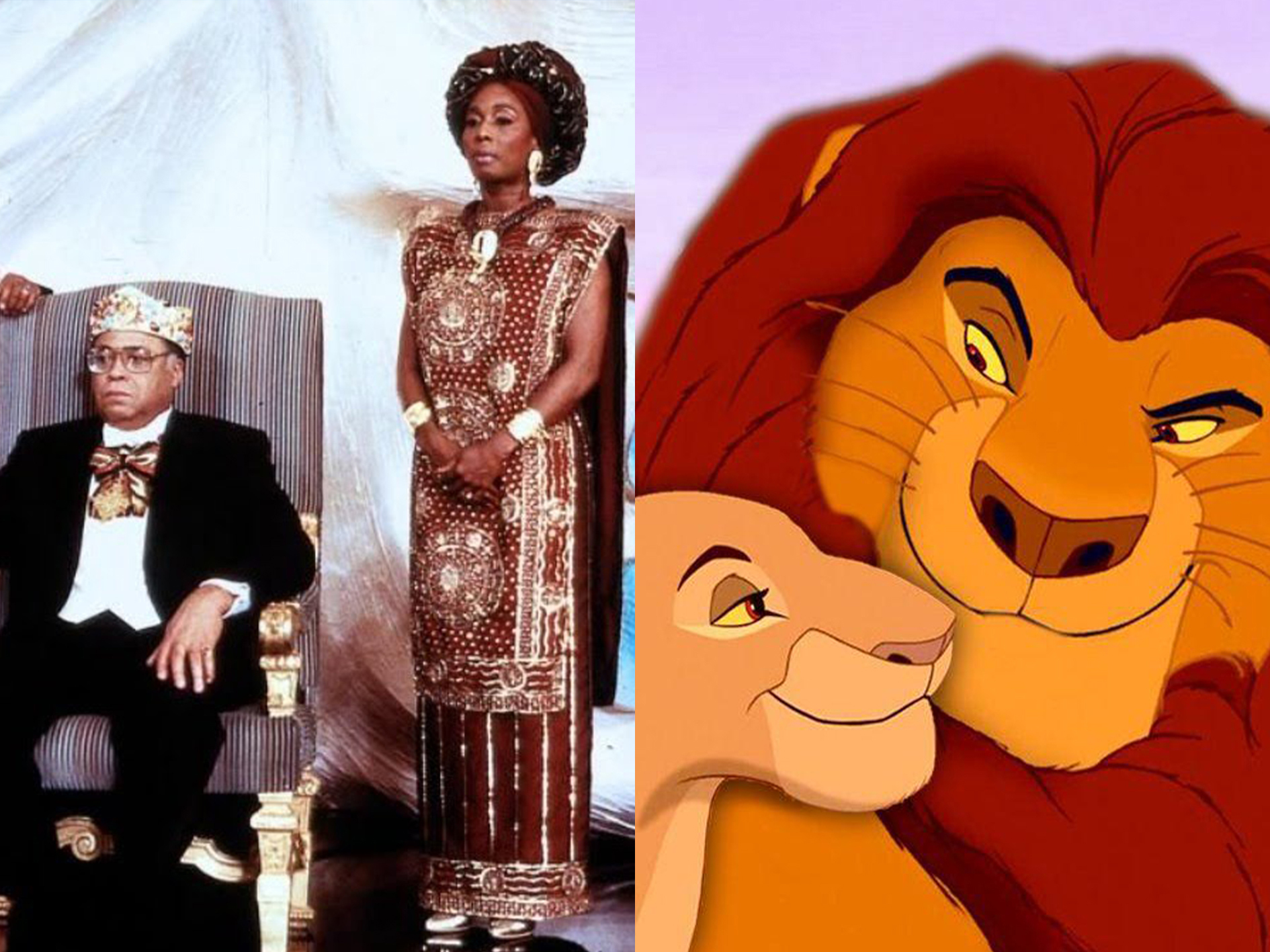
13. There are early appearances from Cuba Gooding Jr and Samuel L. Jackson
One of Coming to America’s barbershop scenes features a young Cuba Gooding Jr. Credited simply as ‘Boy Getting Haircut,’ this was the very first film role of the young actor. Gooding would rise to fame three years later with Boyz n the Hood, before winning the Best Supporting Actor Oscar for Jerry Maguire in March 1997.
Nor is Cuba Gooding Jr. the only 90s star to make an early appearance in Coming to America, as Samuel L. Jackson also has a cameo as an armed robber. While Jackson had been working in film since the 70s, this was his most high profile role yet. The following year Jackson had a key role in Spike Lee’s Do the Right Thing, before Quentin Tarantino’s Pulp Fiction made him a true superstar.
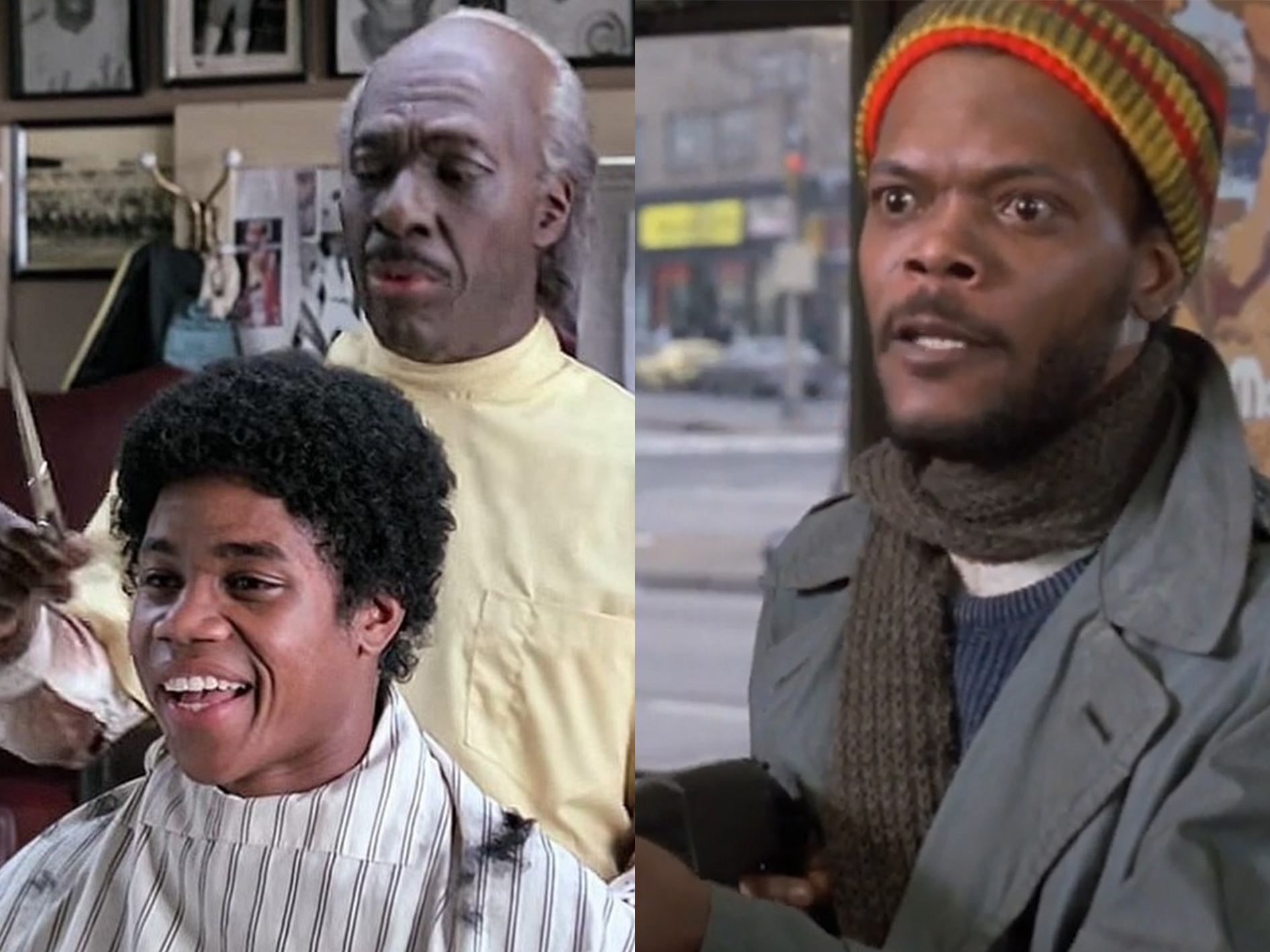
12. The filmmakers were sued for plagiarism
Officially, the story for Coming to America was written by Eddie Murphy himself, and developed into a screenplay by David Sheffield and Barry W. Blaustein. However, writer Art Buchwald sued the filmmakers and studio Paramount Pictures, claiming they had stolen the concept from his own script treatment written years earlier.
Buchwald’s script had indeed been optioned by Paramount in 1982, with both Landis and Murphy linked to the project, but it was cancelled. The writer won a breach of contract action, but the studio refused to pay the millions he demanded in damages. After a four year legal battle, Buchwald was finally awarded just $150,000.
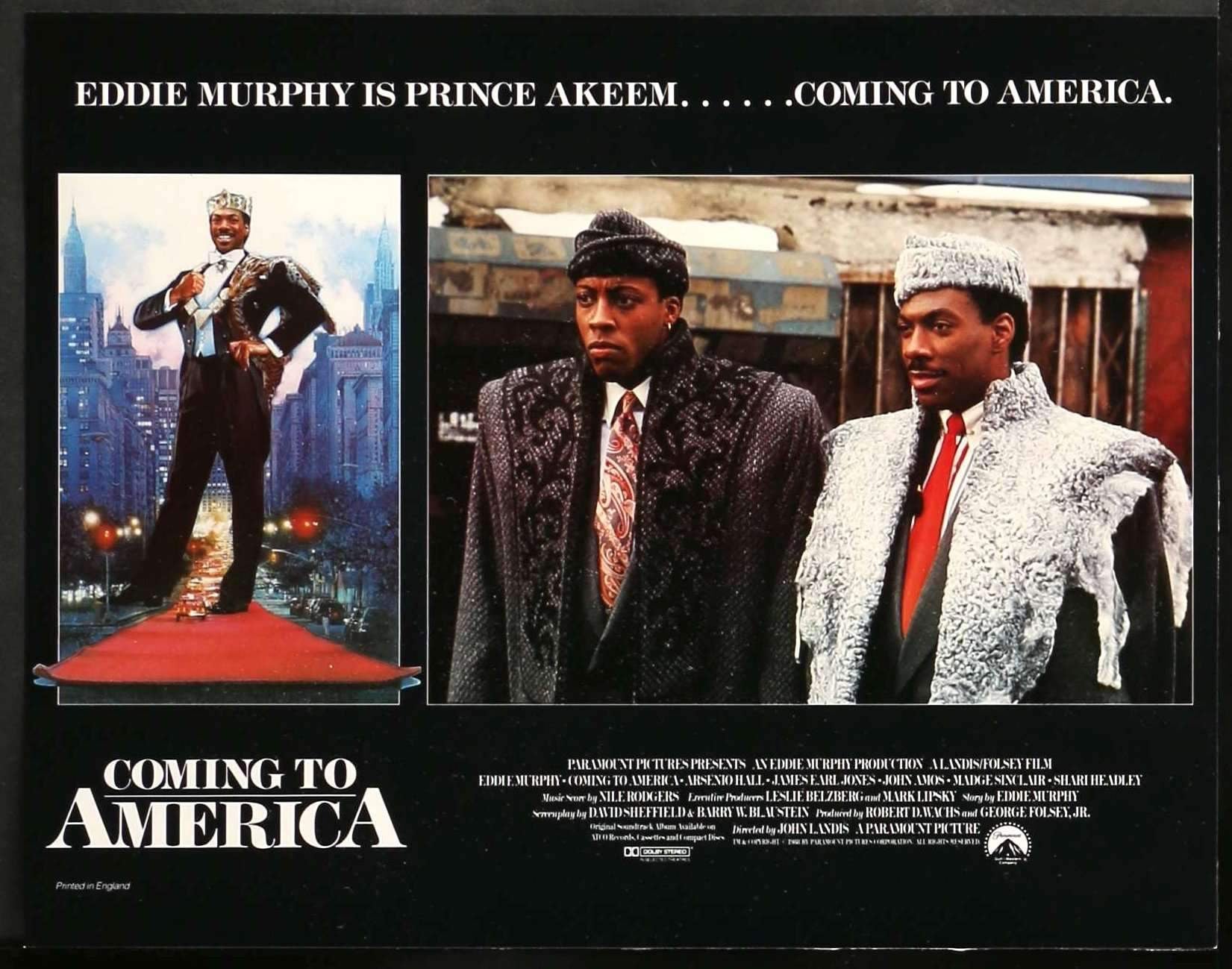
11. A pilot episode was shot for a TV spin-off series
Coming to America proved to be a big hit, and many years later it would get a sequel – but long before that, a Coming to America TV spin-off series was on the cards. Actor Tommy Davidson was cast in the lead, playing the brother of Eddie Murphy’s Akeem. Eddie Murphy was credited as executive producer, but neither he nor any other cast members from the film appeared.
Only a pilot episode was shot for a Coming to America was shot in 1989. Unfortunately for all involved, it went down badly and was not picked up for a series. Happily for Davidson, greater success wasn’t far away: he was among the original cast members of TV sketch comedy show In Living Color, which also featured Jamie Foxx, Jim Carrey and various members of the Wayans family.

10. Murphy drove to the Paramount office in his Saul make-up to see if he’d be recognised
Murphy himself came up with all but one of the characters he portrays in Coming to America. The character of Saul was instead suggested by director John Landis, who recalls that he “had read this article, that I was really offended by, about Jewish comics in blackface – Eddie Cantor and Al Jolson and stuff. I thought it was really ignorant, so I just said, ‘Eddie, I’m gonna have you play an old Jew.’ And he said, ‘What?'”
Murphy wasn’t convinced this would work until Rick Baker did a make-up test on him, and the actor was able to go around completely unrecognised. Landis explains, “the test makeup totally convinced Eddie. He had the accent down, Deborah made him a hump for his coat, and he went around the Paramount offices flirting with secretaries. He realized, ‘I can do it.’ He was so funny.”
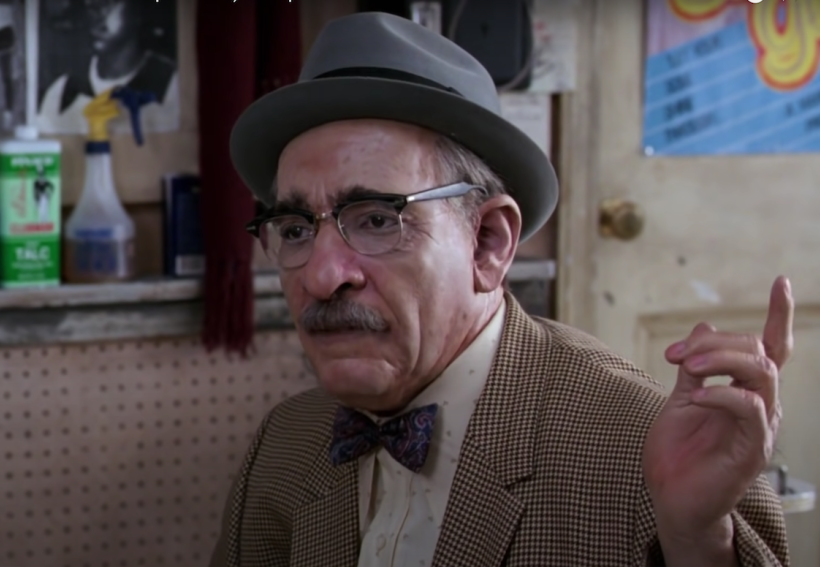
9. John Amos had previously appeared in an early McDonalds TV commercial
Coming to America co-stars John Amos as Cleo McDowell, owner of the McDowell’s restaurant where Akeem finds work. Amos’ casting may have helped grease the wheels with the real McDonalds, as the actor had something of a history with the fast food corporation. In his younger years, Amos worked in the very first McDonalds restaurant opened in Canada.
More significantly, one of Amos’ first high profile roles as an actor was in a TV commercial for McDonalds, performing a song-and-dance routine entitled Grab a Bucket and Mop. Coming to America features a reference to this commercial, in the moment when Akeem tries with difficulty to figure out how to use a bucket and mop himself.

8. Eddie Murphy sings a song featured on the film’s soundtrack
While most people think of Eddie Murphy as a stand-up comedian and movie star, it’s not quite so well remembered that he also launched a less successful musical career in the mid-80s. He released his debut album How Could It Be in 1985, which featured his biggest hit single, Party All the Time; Murphy’s second album So Happy followed in 1989.
So Happy features a track entitled I Got It, which is also used in Coming to America, playing in a scene when Akeem and Semmi go to a club. However, I Got It was not included on the commercially released Coming to America soundtrack album; and while Murphy recorded a third album in the early 90s, he’s largely stayed away from the music industry since.
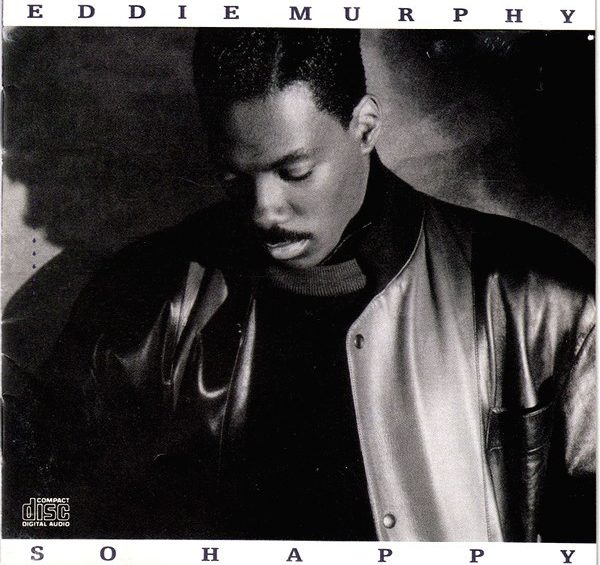
7. Murphy had an on-set entourage worthy of royalty
On camera, the main joke in Coming to America is how Murphy’s spoiled Prince Akeem has no idea of how to work or look after himself in working class Queens, New York. However, behind the scenes Murphy himself was enjoying a similar level of pampering and special treatment afforded by the huge success he had attained in the years prior to the film’s release.
John Landis has noted that one of the things which angered him about Murphy during production was his “bulls**t entourage.” This is reported to have included a personal valet, chauffer service available to the actor 24/7 and a personal trainer, amongst other perks. The actor’s fee, meanwhile, was reportedly $8 million upfront plus a cut of the film’s profits.
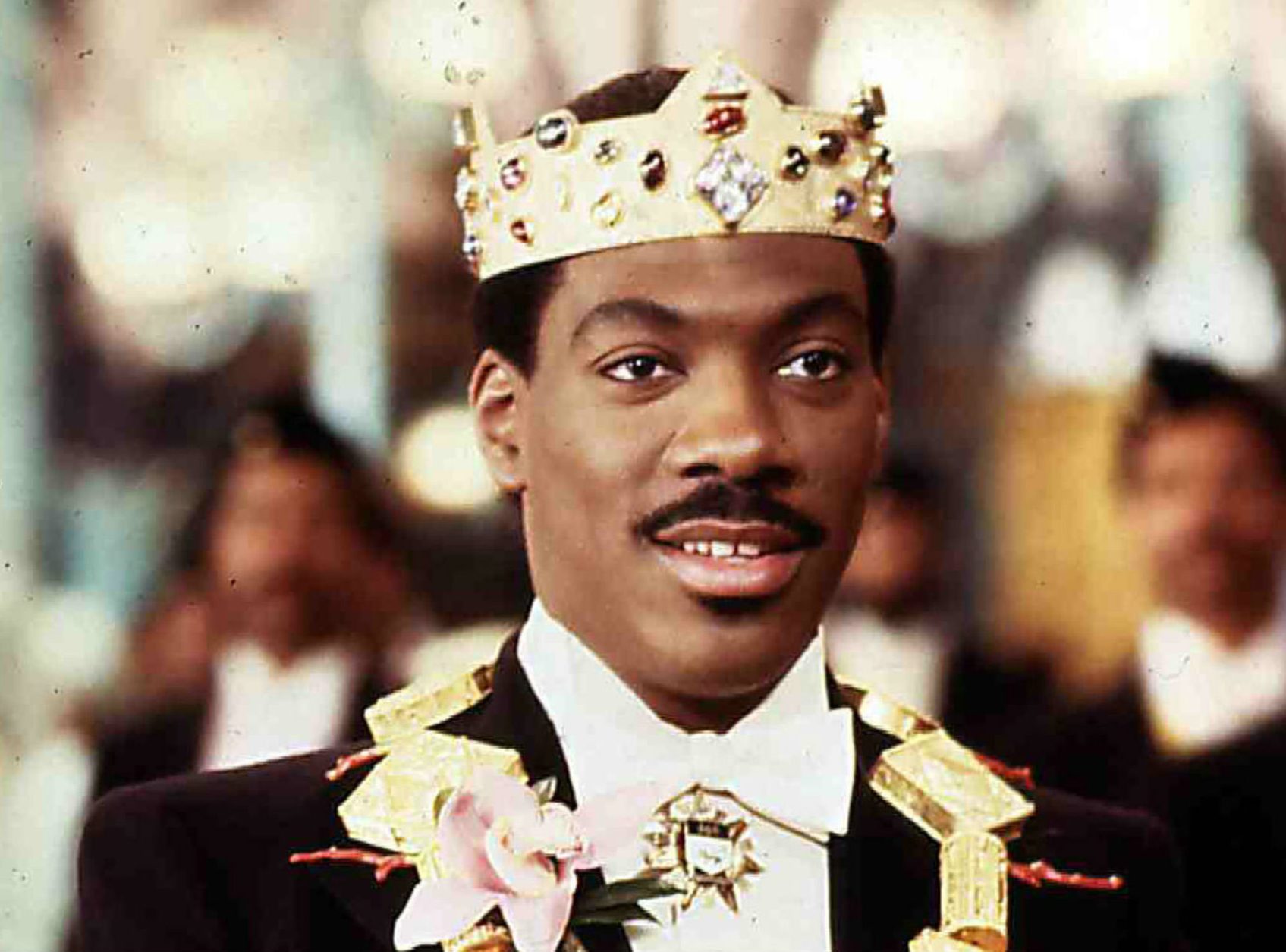
6. It wasn’t screened for film critics, because the studio were worried about bad reviews
Considering what a huge, enduring hit Coming to America proved to be, it’s perhaps surprising to learn that studio Paramount were initially concerned that it might flop. An early press screening in New York had not gone down well, and as a result of this studio executives chose not to hold any further advance screenings for critics, for fear of negative reviews.
This may have been a wise move, as Coming to America’s initial reviews were somewhat mixed, with some declaring the film a let-down. However, any detrimental impact from the critics was quickly swept aside by positive word of mouth, as the hugely enthusiastic audience response saw the film snowball into a far greater commercial success than expected, with global earnings in the region of $350 million.

5. All but three of the speaking parts in the film are taken by black actors
Eddie Murphy’s rise to fame in the 80s was widely celebrated for breaking down racial barriers, but the actor himself had faced some criticism for not using his newfound fame to help elevate other black performers in Hollywood. Murphy addressed this with Coming to America. Whilst director John Landis and screenwriters David Sheffield and Barry W. Blaustein are white, the vast majority of the cast are not.
With Murphy and Hall heading up an ensemble that includes Shari Headley, James Earl Jones, John Amos, Eriq La Salle and Frankie Faison, Coming to America has a predominantly black cast, with only three speaking parts for white actors. Murphy says the studio insisted they cast one white comedian, so Louie Anderson was given the role of McDowell’s employee Maurice; the other two white speaking parts go to the aforementioned Ralph Bellamy and Don Ameche, reprising their Trading Places roles.
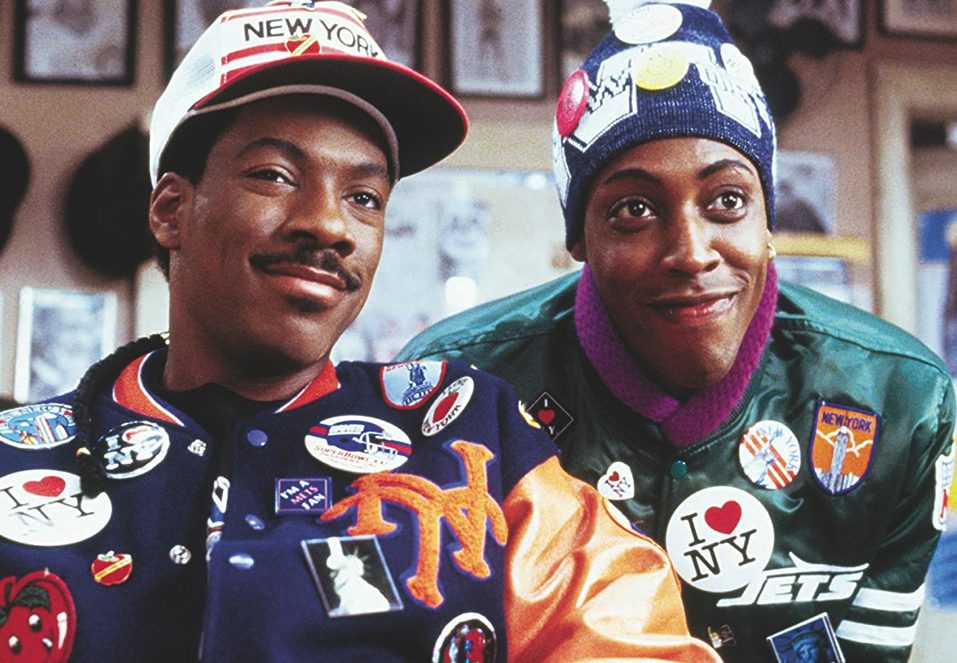
4. Paul Gleason was asked to appear, but had to decline because it clashed with Die Hard
Originally, the plan wasn’t just for Don Ameche and Ralph Bellamy to reprise their Trading Places roles in Coming to America. Eddie Murphy and John Landis had also intended to bring back Paul Gleason to once again play the role of Clarence Beeks, the security specialist who works for Ameche and Bellamy’s Duke brothers.
Unfortunately Gleason had to decline, as the shooting schedule clashed with another movie he was working on at the time: Die Hard. Most of us would agree the actor made a smart move there, as the role of the ineffectual Dwayne Robinson in the 1988 action classic is one of the roles the late Gleason is best remembered for, along with the despicable Assistant Principal Vernon of The Breakfast Club.

3. There’s a nod to a classic Marx Brothers comedy
Murphy, Landis and many of those working on Coming to America really know their comedy, so it’s entirely fitting that the film contains some nods to the great comedians of years gone by. However, you might not have realised there’s also a very direct reference to one of the best-loved films by one of the most acclaimed film comedy teams of all time, the Marx Brothers.
Listen closely to the national anthem of Prince Akeem’s home country Zamunda. If it sounds at all familiar, that’s probably because it follows the same melody as the invented national anthem of another fictitious country, Freedonia, as featured in the Marx Brothers’ 1933 film Duck Soup, which is generally considered to be the comedy quartet’s masterpiece.
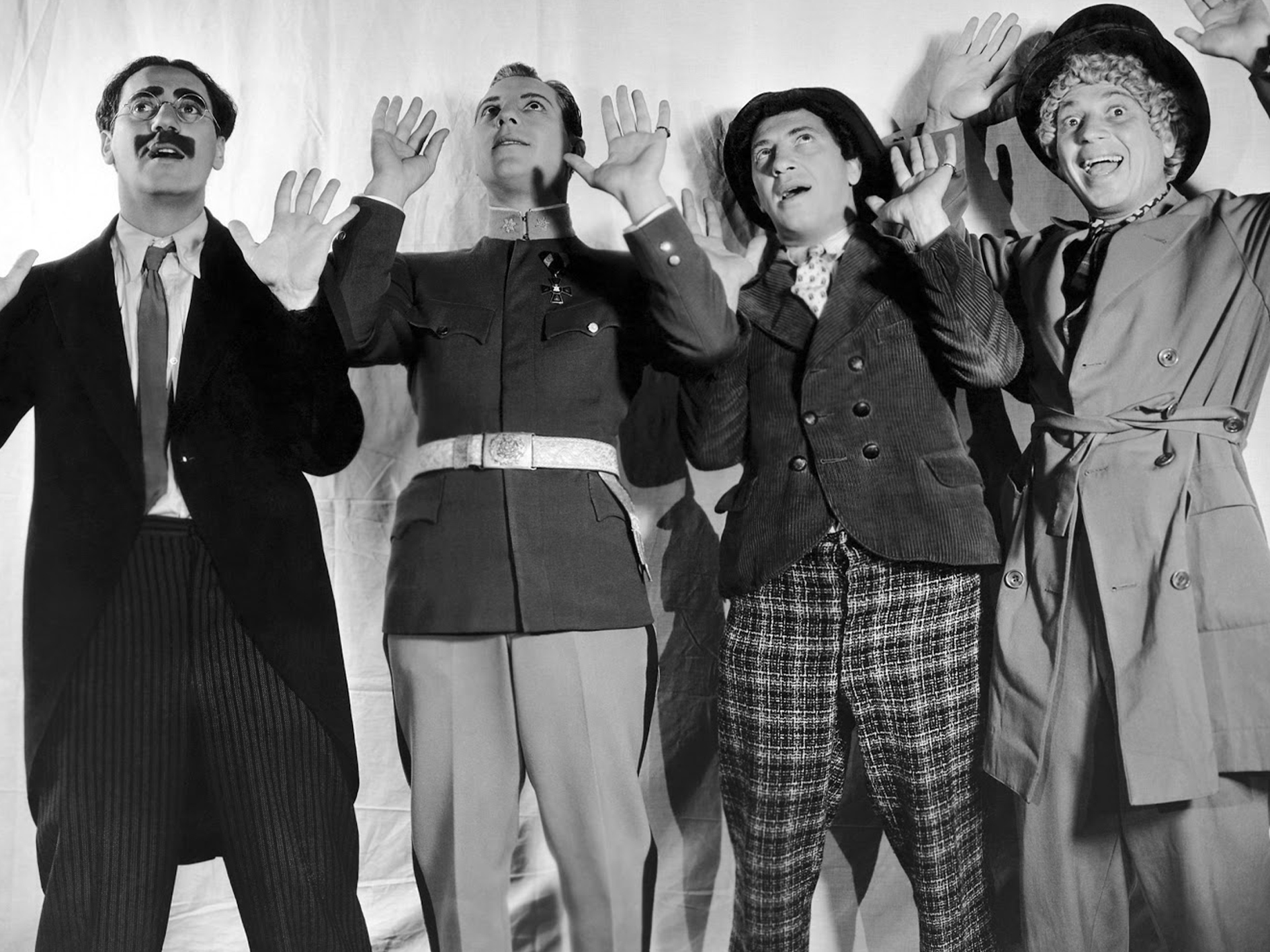
2. Vanessa Williams was a contender for the part of Lisa
The crux of Coming to America’s plot is that Murphy’s Prince Akeem heads to America and hides his true identity in order to find a woman who will love him for who he is. This he finds in Lisa, his co-worker at McDowell’s and daughter of the restaurant owner. This part went to actress Shari Headley, in what was her first major film role.
However, before the filmmakers cast Headley, many other up-and-coming actresses were considered – and one among them was Vanessa Williams. The one-time Miss America (who had been forced to abdicate her title under scandalous circumstances) was still starting out as both an actress and a singer. 1988 ultimately saw her break through in music with her debut album The Right Stuff.
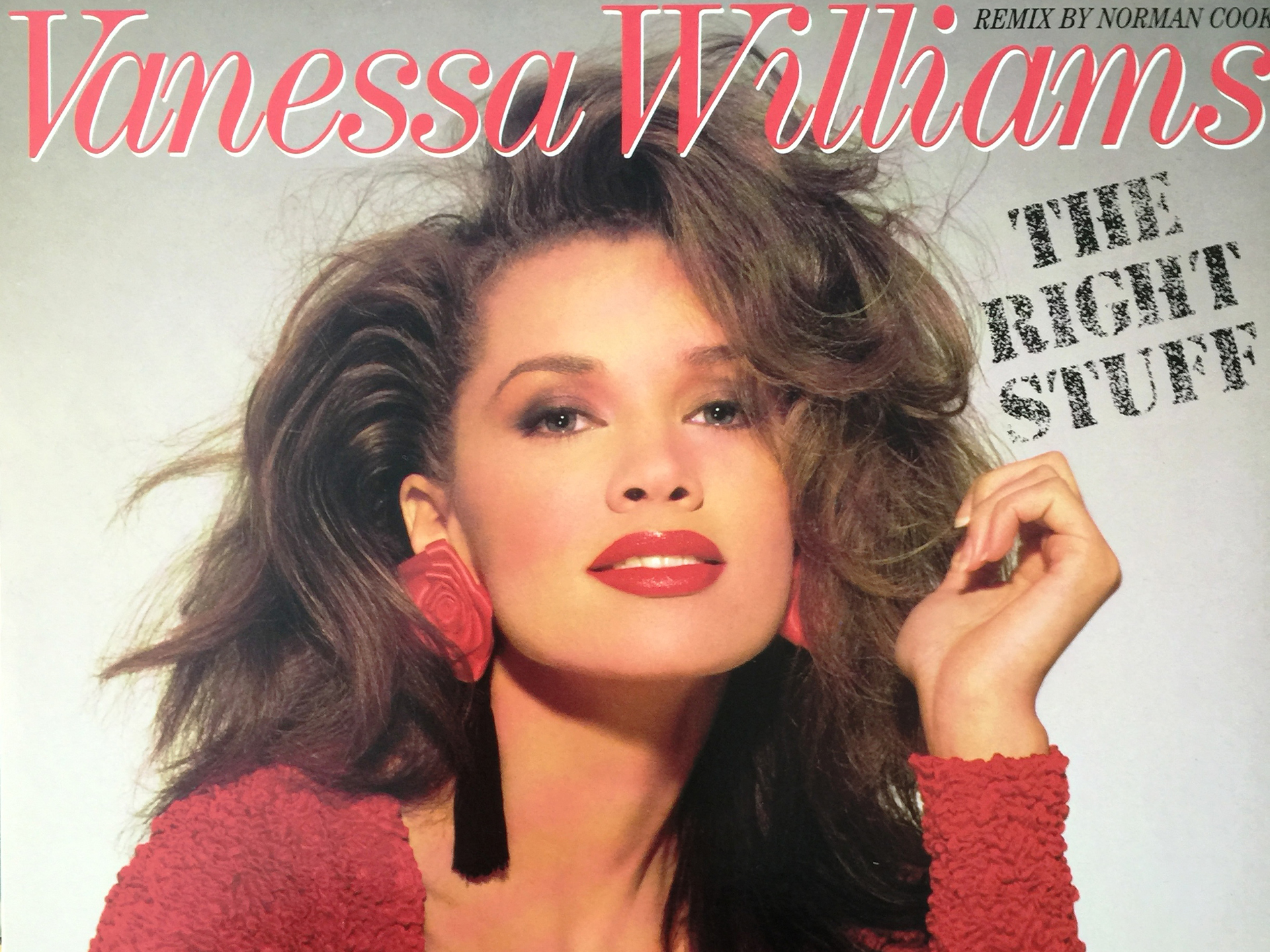
1. James Earl Jones paraphrases one of his old Star Wars lines
King Jaffe actor James Earl Jones is (and doubtless always will be) synonymous with his role as the voice of arguably the most iconic villain in film history, Darth Vader of the Star Wars movies. Jones’ voice is instantly recognisable as that of the mighty Sith lord, so it’s not surprising that they chose to draw attention to it in Coming to America.
At one point in the film, we hear the King ominously declare, “No. Do not alert him to my presence. I shall deal with him myself.” While this isn’t a word-for-word quote from 1983’s Return of the Jedi (the last Star Wars film made at the time), it is very close to when Vader, sensing Luke Skywalker’s presence, tells his Imperial underling, “No. Leave them to me. I will deal with them myself.”


